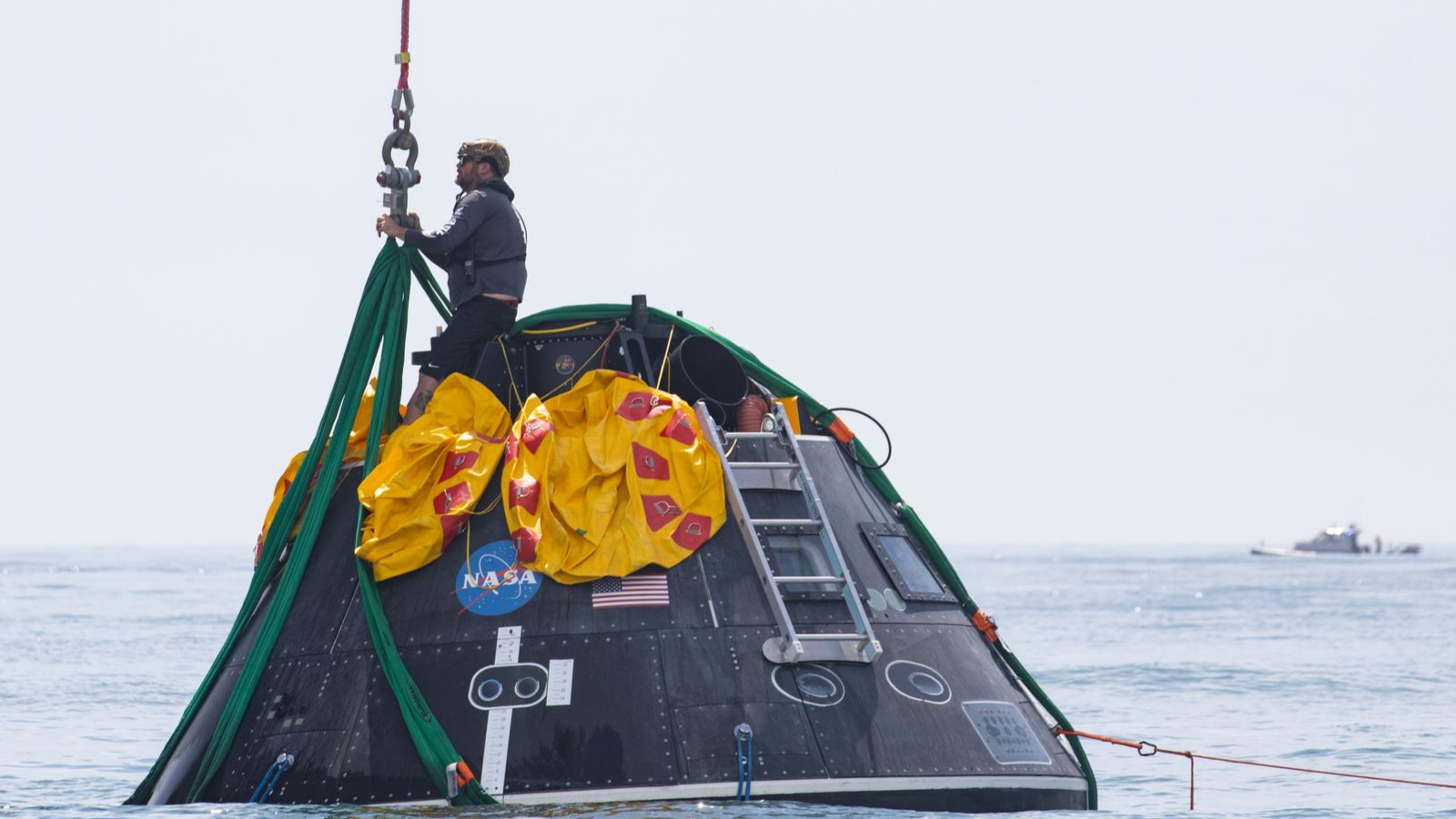Here's how NASA and Europe will bring Mars samples back to Earth (video)
A team of spacecraft will relay Martian rock samples to our planet.
A new video shows how a team of NASA and European Space Agency (ESA) spacecraft plan to relay Martian rock samples to Earth.
Key moments of the unprecedented and highly complex Mars Sample Return (MSR) mission are detailed in a 106-second NASA/ESA video, which starts off with a spacecraft encased in an aeroshell speeding toward Mars.
NASA's Perseverance rover — which has been busy collecting samples since touching down on the Red Planet in February 2021— gives off a somewhat anthropomorphized feel as it watches NASA's MSR lander descend and land nearby.
Related: 12 amazing photos from the Perseverance rover's 1st year on Mars

Perseverance approaches the lander, transferring its precious and pristine samples to a sample containment system aboard the lander. These are then blasted into Mars orbit by a two-stage rocket, whose second stage meets up with ESA's MSR orbiter.
The orbiter then fires its engines to head for home. The final moments of the video show the release of the sample-containing Earth Entry Vehicle just ahead of arrival at Earth.
The animation was created with contributions from NASA’s Jet Propulsion Laboratory, Goddard Space Flight Center, Marshall Space Flight Center and ESA.
Breaking space news, the latest updates on rocket launches, skywatching events and more!
Not shown is how a pair of Ingenuity-like helicopters with added robotic arms could be used to collect samples cached and dropped by Perseverance — a backup plan that NASA will enact to cover the MSR mission in case the rover cannot reach the lander. Previous plans to incorporate a European fetch rover into the mission have been abandoned.
The MSR lander, Mars rocket and ESA orbiter are currently scheduled to launch around 2028, with a landing on the Red Planet in 2031 and return to Earth in 2033.
Follow us on Twitter @Spacedotcom or on Facebook.
Join our Space Forums to keep talking space on the latest missions, night sky and more! And if you have a news tip, correction or comment, let us know at: community@space.com.

Andrew is a freelance space journalist with a focus on reporting on China's rapidly growing space sector. He began writing for Space.com in 2019 and writes for SpaceNews, IEEE Spectrum, National Geographic, Sky & Telescope, New Scientist and others. Andrew first caught the space bug when, as a youngster, he saw Voyager images of other worlds in our solar system for the first time. Away from space, Andrew enjoys trail running in the forests of Finland. You can follow him on Twitter @AJ_FI.
